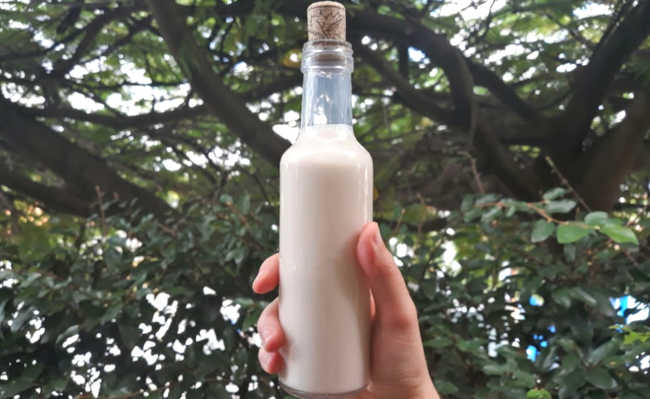Nonylphenol ethoxylate: know what it is
Nonylphenol ethoxylate is a substance that is very present in our daily lives and can pose risks to health and the environment

Louis Reed image in Unsplash
Nonylphenols are organic chemical compounds belonging to the alkylphenol family, industrially obtained through the process of alkylation of phenol with nonene. Basically, these substances are formed by a 'phenol ring' at one end, attached to a carbon chain. Despite their little-known name, nonylphenols are widely present in our daily lives and can pose serious risks to health and the environment.
Nonylphenols are commonly used as an intermediate product for the manufacture of resins, plastics, antioxidants and mainly as a base for the synthesis of the ethoxylated nonylphenol compound. The production of ethoxylated nonylphenol occurs through the ethoxylation process, a reaction between nonylphenol and ethylene oxide.
Once synthesized, ethoxylated nonylphenol works as an efficient surfactant or nonionic surfactant with low economic value. It is noteworthy that surfactants work by reducing the surface tension of a liquid, facilitating its interaction with other substances.
The efficiency of this generated compound becomes evident when we look more closely at its chemical composition. The ethoxylated nonylphenol has a water-soluble end (hydrophilic) in its molecules, referring to the phenol ring, and another non-water-soluble end (hydrophobic), coming from the ethylene oxide chain.
This property guarantees the interaction of these compounds with both polar substances (water) and non-polar substances (oils, greases, and dirt), being able to act as efficient emulsifying agents. Therefore, nonylphenol is widely used in cleaning products.
Furthermore, this compound varies according to the degree of ethoxylation: the greater the proportion of ethylene oxides present in the reaction, the greater its hydrophilic characteristic, thus altering its properties, such as solubility and detergency. Therefore, studies have shown that these compounds have an unstable nature due to the great possibility of variation in the degree of ethoxylation.
Where is ethoxylated nonylphenol found
Because of its relative low cost and high efficiency, ethoxylated nonylphenol is produced on a large global scale and widely used in diverse products and across multiple industries.
Ethoxylated nonylphenol is mainly used in detergents, emulsifying agents, wetting agents, solubilizers and degreasing agents. Thus, this synthetic chemical is present in all markets and in our homes.
In addition, ethoxylated nonylphenol is found in a large number of industrial, household, agricultural, cosmetic and pharmaceutical products. Among its applications in the industrial area, those in the oil and textile sector stand out, being used mainly as an emulsifier, dispersant, humectant, corrosion inhibitor, detergent for purging and bleaching processes, washing of materials after dyeing and dye dispersant.
As a detergent, ethoxylated nonylphenol is used both in the industrial and domestic areas. The compound can be found in degreasers, dry cleaning products for fabrics, liquid waxes, abrasive cleaners, silverware cleaners, window cleaners, laundry detergents and fabric softeners.
According to the International Nomenclature of Cosmetic Ingredients (INCI), when present in the composition of products intended for human exposure, ethoxylated nonylphenol is also called nonoxynol. In the pharmaceutical area, specifically, nonoxynol-9 is a widely known spermicide that is still used in several countries today. It was one of the first known microbicides, launched on the American market in the 1960s, with the initial purpose of contraception. Its use, however, can be associated with several negative effects, such as infertility.
In the cosmetics sector, ethoxylated nonylphenol works as a wetting and emulsifying agent for cosmetic and personal care formulations, and can be found in shampoos, conditioners, hair color treatments, body cleaning products, bath products and in flavorings.
Negative impacts of ethoxylated nonylphenol
The widespread use of ethoxylated nonylphenol can cause serious harm to human health and the environment. Once proven the unstable nature of this substance, it is possible to observe how anthropogenic compounds, relatively harmless in certain chemical states, as in the particular case of ethoxylated nonylphenol, can be transformed into toxic substances when disseminated in the environment.
Once dispersed in the environment, the ethoxylated nonylphenol is degraded, generating nonylphenol and some ethoxylated compounds with shorter chains. These degraded compounds have greater toxicity than their precursors and have been identified as endocrine disruptors, that is, substances that have the power to cause alterations in the functioning of the endocrine system of invertebrates and vertebrates.
The consequences of these dysfunctions can be serious, since hormones play a fundamental role in controlling the development of the most varied species.
It was also found that nonylphenol is not easily biodegradable and can take a long time to be transformed in nature, tending to remain in surface water and in soils and sediments. Another proven aspect concerns the bioaccumulation of nonylphenols in fish and birds, harming the entire food chain involving these animals.
In addition to the ability to interfere and impact the functioning of the hormonal system, studies reveal that exposure to high levels of ethoxylated nonylphenol can adversely affect humans, causing irritation to the respiratory system, digestive system, skin and eyes.
Human contamination by ethoxylated nonylphenol
In addition to causing countless damages to the environment, the use of ethoxylated nonylphenol also puts food safety at risk. Research has shown that some practices, such as the reuse of wastewater for irrigation on agricultural land and the use of this compound in the composition of pesticides, can lead to absorption in cultivated plants and in aquatic ecosystems.
In addition, nonylphenol present in plastic containers and packaging can migrate into food and drinking water. Thus, humans are exposed to these substances, mainly orally, through the ingestion of contaminated food and water.
Other exposure routes occur through inhalation of air or through contact with personal care products, detergents, cleaning products and spermicides. According to studies, the nonylphenol ethoxylated compound has already been detected in human milk, blood and urine.
However, despite the high risks for the environment and human health, the efficiency of ethoxylated nonylphenol in different segments makes it difficult to identify alternative substitutes.
What the legislation says about ethoxylated nonylphenol
When they started to be used, it was believed that the risk associated with the use of these compounds would be low. However, after laboratory analysis, it was proven that the products generated from the degradation of ethoxylated nonylphenol are more toxic than the original products and, after the inclusion of these compounds in the list of emerging water contaminants, the need for further studies became evident. on the toxicity of these substances.
Faced with this, some world powers, such as members of the European Union and Canada, have implemented measures to prevent pollutants aimed at drastically reducing the production and use of nonylphenol and ethoxylated nonylphenol compounds. One of the measures is the adoption of ethoxylated alcohols, which are more expensive compounds, but less harmful to health and the environment.
Another measure was the ban on nonylphenol and ethoxylated nonylphenol in the composition of cleaning products by some companies in the European Union and the United States. However, many countries, including Brazil, have not yet taken significant restrictive measures to avoid or reduce the impacts associated with the use of these products. In Brazil, the National Health Surveillance Agency (Anvisa), still offers wide permission for the presence of ethoxylated nonylphenol in the formulations of products intended for cleaning.
In 2005, the National Environmental Council approved Resolution 357, which deals with the classification of water bodies and establishes quality standards for the discharge of effluents. However, despite the intention to restrict the release of harmful substances into water courses, this document does not establish maximum values allowed for nonylphenol in fresh or salt water, nor the concentration tolerated in industrial effluents or effluents from sewage treatment plants.
Thus, despite the increase in scientific studies on the risks attributed to ethoxylated nonylphenol and positive changes in legislation in some developed countries, the same seems not to be happening in most underdeveloped countries, revealing a breakdown in communication between these different sectors and societies.
Alternatives to the use of ethoxylated nonylphenol
Any chemical has some kind of impact. The important thing is to always consider usage and make conscious choices. In order to avoid the adverse effects caused by the compounds nonylphenol and nonylphenol ethoxylated, the most effective alternative is to avoid, as far as possible, the use of products containing these substances. Or, at least give preference to products that present them in low concentrations.
To find out if ethoxylated nonylphenol is a major component of the product, look on the label to see if it appears in the last items listed. If a certain compound appears at the beginning of the ingredients list, it means that it is one of the main components of the product.
We suggest that you carefully observe the composition and ingredients of the products you consume, reading their labels and packaging. Also, give preference to natural and homemade cosmetics and cleaning products. In Brazil, natural cosmetics are certified and follow the quality standards of IBD Certification and Ecocert. Also try to know and test the ecological cleaning products that exist on the market.










